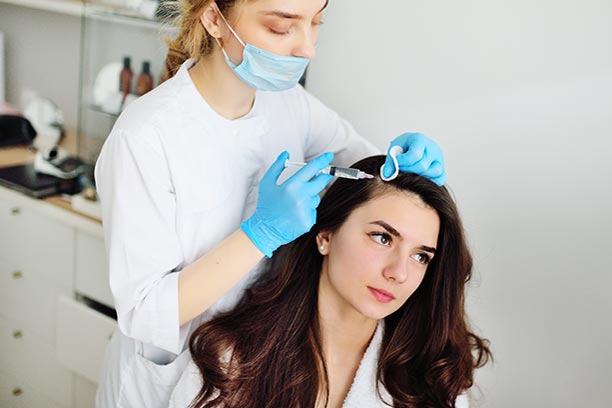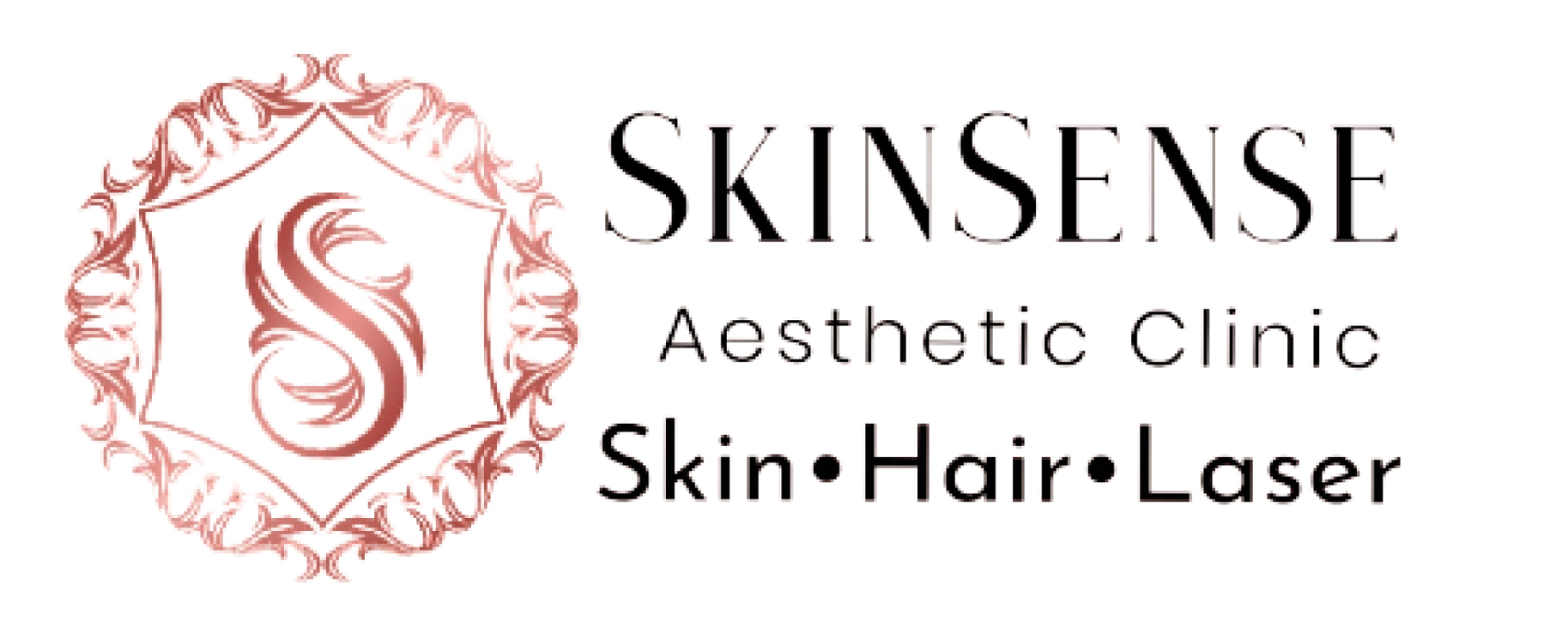
Hair fall is a common concern for many individuals, and finding the right hair fall treatment is essential to addressing the issue effectively. Losing hair is very tragic for both men and women.
Here at Skin Sense Aesthetic Clinic, we offer a comprehensive approach to combating hair loss and promoting healthy hair regrowth. We offer a wide range of treatments for hair loss, like Medication, PRP Treatment, Mesotherapy, GFC Hair treatment, and so on. We do it as per the needs of patients. We understand the impact hair loss can have on your self-esteem, and we are here to help you regain your beautiful and vibrant locks. We have proven to be the best Aesthetic Clinic in South Delhi.
Causes of Hair Loss
Hair loss, also known as alopecia, can occur due to various factors. These are some common causes of Hair Loss.
1. Hormonal Changes: Hormonal imbalances can lead to hair loss. Conditions such as pregnancy, childbirth, menopause, and hormonal disorders like polycystic ovary syndrome (PCOS) can cause temporary or permanent hair loss. Men can lose hair due to hormonal changes.
2. Anxiety and Stress: Anxiety and Stress are the primary reasons behind hair loss. Physical and emotional stress can also result in the gradual loss of hair. People who are prone to being anxious also have a higher chance of losing their hair. Significant physical trauma, surgery, severe illness, or emotional stress can lead to temporary hair loss. Hair loss from tension only reduces when people come out of these situations.
3. Thyroid Disorders: Thyroid disorders are also a main cause of hair loss. It’s brought down the number of hairs to drastic hair loss. Proper thyroid treatment automatically controls hair fall.
4. Medications: Some medications can cause hair loss as a side effect. Drugs used in cancer treatment (chemotherapy), anticoagulants, beta-blockers, and certain antidepressants are known to cause hair loss.
5. Nutritional Deficiencies: Poor nutrition and deficiencies in vitamins and minerals, such as iron, zinc, vitamin D, and biotin, can affect hair health and lead to hair loss.
6. Common medical abnormalities: Some other causes of hair fall are failure of the renal system, liver problems, inflammatory bowel diseases, and similar conditions. As each of these abnormalities disturbs the body’s own mechanism, it affects hair follicles and so causes hair fall.
Classifications of Hair Loss
Androgenic Alopecia: This is the most common type of hair loss in men. It typically starts with a receding hairline and thinning at the crown, eventually leading to partial or complete baldness. Women with female pattern baldness experience diffuse hair thinning, particularly on the top of the scalp, while the hairline is usually preserved.
Traction Alopecia: Traction alopecia occurs due to repeated pulling or tension on the hair, often caused by tight hairstyles like braids, ponytails, tight hairpins, and rubber bands, which tighten the hair roots for a long time. It leads to hair loss around the hairline and temples.
Involutional Alopecia: This kind of alopecia is related to age. Older age means a shorter hair cycle, and hair also becomes thinner. Further, active hair enters the telogen, or resting phase, quicker. Usually, at a young age, people have 85% of their hair in each growth stage. The percentage takes a downturn with ageing. As it is a natural process, proper care in nutritional intake and a healthier lifestyle are the means to recover as much hair as possible.
Trinia Capitis: In medical terms, it is a fungal infection that ends up with hair loss. It becomes visible as a single or multiple patches of hair loss. At the same time, skin can be itchy, inflamed, and scaly. The hair loss pattern takes the shape of ringworm. In Trinia capitis, when hair tears off, it leaves behind a distinct pattern of black dots. This condition is more commonly found in children, while adults are rare cases. Suitable medication for the fungal infection can heal hair loss problems.
Alopecia Areata: Alopecia areata is an autoimmune condition in which the immune system attacks hair follicles, leading to sudden and patchy hair loss. When the body fails to recognise its own cells, the immune system treats hair like an invader and therefore attacks it. It can occur on the scalp or other areas of the body.
Telogen Effluvium: Telogen effluvium is a type of hair loss that occurs due to significant stress, illness, hormonal changes, or nutritional deficiencies. It leads to widespread shedding of hair and can be temporary if the underlying cause is addressed.
Treatments for Hair Loss
There are many treatment options available for Hair Loss. Some of the good treatments are as follows:
Medications: – Some medications are very effective for hair loss; these are Finasteride and Minoxidil. Finasteride is a pill, and Minoxidil is a lotion to be applied over the scalp, especially in the affected region. Minoxidil is a popular choice for halting hair loss and promoting new hair growth.
Mesotherapy : Mesotherapy is a cosmetic procedure that uses a series of superficial injections administered into the middle layer of the skin, known as the mesoderm. The injections contain a mixture of medications, vitamins, minerals, and other ingredients essential for hair growth.
PRP Treatment : Harness the power of your body’s own healing mechanisms with PRP therapy. PRP Treatment involves drawing a small amount of your blood, processing it to concentrate platelets, and then injecting the enriched plasma into your scalp. PRP therapy stimulates hair follicles and encourages natural hair growth.
Laser Combs: Unlike normal combs, these are specialised combs that carry electricity and emit concentrated light to stimulate the hair follicles. When combined with other hair loss treatments, laser-based combs deliver the most fruitful results in the shortest span of time.
Surgery: Hair transplant surgeries are the last resort to growing hair. It is best suited for curing male pattern baldness by removing DHT-resistant hair from the back of the scalp and inserting the active follicles in bald areas. Surgeries result in an even growth of hair around the scalp.

